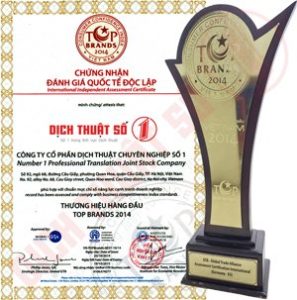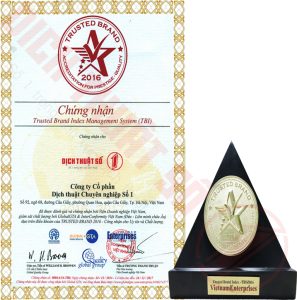When a compiler has to fight with medical document translation, then one must translate the specific phrases, idioms, meanings, vocabulary range, style, structure, grammar and syntax in one's / task to get an accurate translation. For the purpose of this article, I will focus on the specific issues that arise at the levels, as opposed to the grammatical, written and pragmatic equivalence levels.

Lexical problems arise when translating
The meaning of a word is its meaning in a language that has developed through use. There are different types of meaning that relate to the origin of the word. For example: propositional meaning, connotative meaning, expressive meaning, and evoked meaning. Propositional meaning is the most obvious and straightforward basic meaning of the word. Expressive meaning, or connotation, is the nuances of propositional meaning. An example of this is the difference between the words “smell” (definition: to give off a smell) and “reek”. The two words have similar propositional meanings, but contrasting expressive meanings.
The assumed meaning comes from the order in which it is placed. For example, the adjective “sturdy” is often used to describe animals, plants, and inanimate objects, not people. Meaning suggests a lexical range or dialect. A lexical range is the language used for a particular interaction or situation, such as an adult talking to a child. Mona Baker in her book “In Other Words” defines translation errors at the word level as being caused by mismatches in four categories of meaning.
Fortunately, medical translation, unlike legal translation, often has consistent meaning between the two languages. This is because diseases and human anatomy are essentially the same around the world. However, translations often give rise to inconsistent meanings between languages as a result of collocations.
The Difference of Words in Medical Translation
What separates medical translation from other forms of translation is the difficulty of its vocabulary. In this field, many body parts and diseases have technical and colloquial differences, such as “thorax” versus “chest,” and “pertussis” versus “whooping cough.”
According to Peter Newmark, author of “A Layman's View of Medical Translation,” the reason medical terminology is different is due to its distinct history and development.
“The medical vocabulary in European languages is a tangle of synonyms – different words are applied to the same condition, depending on whether it is anatomical, clinical or pathological and sometimes on when and where the expression is used. Thus “brucellosis” has at least 25 synonyms in English (6-12 in other European languages)
Medical translation is considered particularly difficult because the translator needs to know how the body works, how a disease progresses, etc. One could argue that a translator working on an electrical engineering text of a power transmission system would also have a good grasp of how the system works. The difference is that a technical translator can usually name the machine and system in a lower vocabulary range for all technical translations. A technical text for a non-specialist would be less detailed.
The existence of two lexical ranges in medical translation would not make translation more difficult if it were not for the fact that a certain number of languages have only one word to express both cases, while other languages have two or more words.
Ways of communication
In medical translation, texts are presented according to their intended audience. Many attempts have been made to list the different types of information contained in medical translations. But, more or less, the four types are professional to professional (doctor to doctor), professional to semi-professional (doctor to medical student or nurse), professional to non-professional (doctor to patient), and non-professional (reporter to reader).
Three lexical ranges also exist in medical translation: doctor to doctor, doctor to patient, and patient to patient. The latter refers to written material from a non-specialist to others suffering from the same medical condition. Below are examples of the main lexical ranges that exist for a medical term.
technical terms (eg.: candida)
common words (eg.: yeast infection)
mixed (eg, candidiasis or candida yeast infection)
The challenge for the medical translator is to identify potential translations that correspond to each of the above communication situations. The translation considered most accurate often depends on the medical field. For example, in the following sentences about vaccination found in the New England Journal of Medicine:
“We launched a vaccination campaign to protect refugees from diseases such as diphtheria, measles, mumps, whooping cough, rubella and tetanus.“
There is a mix of medical language (whooping cough) and colloquial language (mumps). However, the meaning of this sentence is understood because it is talking about vaccination.
Another example
Thrombosis is the medical term for a blood clot. The following sentences from the New England Journal of Medicine clearly use the medical term:
“In this patient, CT revealed a bright linear signal in the right middle cerebral artery territory suggesting the presence of a thrombus and subtle ischemic changes in the active territory of this artery supporting the diagnosis of developing infarction..”
Dictionaries only solve part of the problem. Newmark warns: “Never accept a bilingual or multilingual dictionary as a reliable source. It often contains too many synonyms without context, outdated words, or “dictionary” words (that is, words that are only found in dictionaries)…
If a medical translator only works with medical texts in a particular field, then the vocabulary range will not be cumbersome. The source or target language of many medical texts happens to use English as a second language which is the lingua franca of the medical profession. A good medical translator will know how to deal with a wide range of vocabulary ranges between the source and target languages.
Conclude
When first working with a medical text, a medical translator must first determine the vocabulary range and translate it into the target language. This can be difficult for the translator when the source and target languages are limited and when some of the terminology exists in the second language. Besides the vocabulary range, the translator will have to deal with the basic concerns of any translation, that is, syntax, grammar, style, terminology and more. Considered a very difficult field to translate, medical translation often has a professional medical background to support them.








